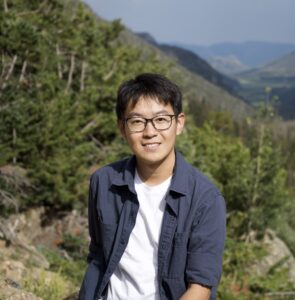
Xiaochang Chen, Fifth-year graduate student at the Lunar and Planetary Laboratory, University of Arizona
Monday, August 28, 2023,
2:30pm-3:30pm,
ASA Koffler Great Room, and Zoom
NASA’s Parker Solar Probe is on its way to the Sun. The mission was named in honor of Eugene Parker, the University of Chicago physicist who predicted that the Sun’s atmosphere (called the corona) is so hot that solar gravity can’t hold it down. He predicted that, as a consequence, solar gases must shoot out like a 3-dimensional rocket to form what is called the solar wind. Since then, many decades of space missions have been dedicated to studying the solar wind and its effects on the Earth and other planets.
By getting a series of gravity assists from the planet Venus, the Parker Solar Probe (PSP) will fly close enough to the Sun to obtain the data needed to figure out how the corona gets so hot and details of how the solar wind and other space particles are accelerated. During its travels to and from the Sun, PSP takes pictures of solar gas emissions and measures the magnetic fields, the solar-wind plasma, high-energy particles, and dust grains. Its data should tell us some of what happens in both the corona and the solar wind to produce “space weather”, such as geomagnetic storms, blackouts, and northern lights.
Xiaochang Chen’s current research focuses on studying the acceleration and transport of solar energetic particles by combining data from one of the PSP instruments with numerical models and analyses. He will tell us about the PSP mission, including its recent observations and new puzzles.
Compiled and edited by Marcia Neugebauer, ASA volunteer

You can connect to Zoom either by using the following URL: https://zoom.us/j/95456511620?pwd=OC9GcnJRNmJpMTdXdXFhaUpCUkx4QT09 or by opening a browser to zoom.com/join and typing in Meeting ID: 954 5651 1620 and Passcode: 85747
